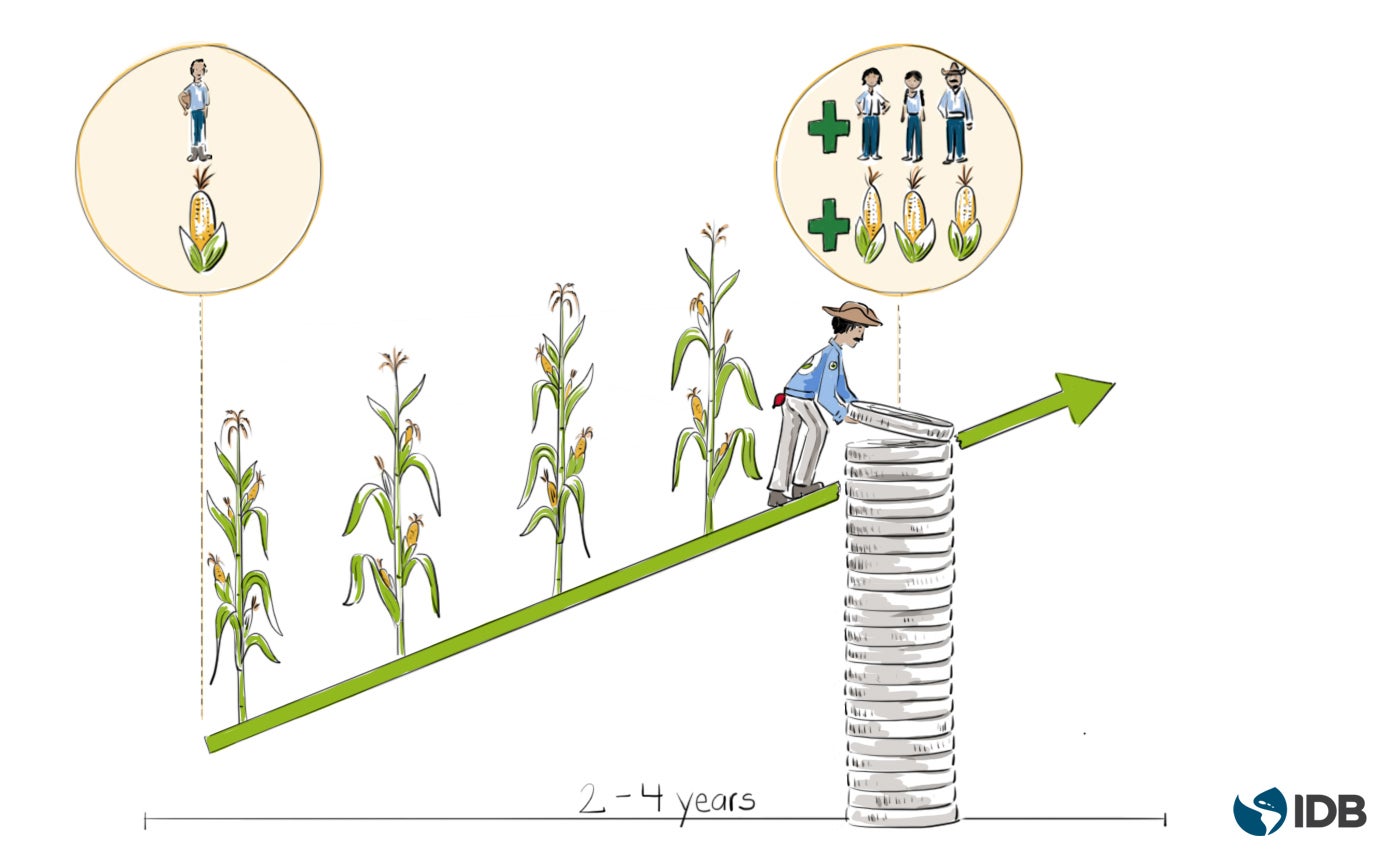Accessing credit is often a challenge for small and medium businesses. Lack of credit is an even greater problem for rural producers in developing countries, where it represents a critical roadblock to growth and economic opportunities.
In a new study, we look at the effects of increasing access to credit through a loan program for small and medium-sized agricultural producers in Mexico on their performance over a 2- to 4-year horizon.
The program was developed by the Financiera Nacional de Desarrollo Agropecuario, Rural, Forestal y Pesquero (FND), a national Development Finance Institution (DFI) in Mexico with a mandate to provide accessible credit and financial services to the rural sector.
In 2012, the FND embarked on a significant expansion of its loan portfolio, while introducing major changes to the methodology it uses to assess applications and approve loans. Using both administrative data from the FND as well as survey data collected specifically for our study, we analyze the effects of obtaining a loan on the sample of rural producers who applied to the program between 2012 and 2014.
To study the effects of obtaining funding, the paper uses a non-experimental methodology for multiple treatments that compares producers that received different types of financing, or that did not received financing, but had similar characteristics. The study identifies the impacts of the loan program differentiating impacts by loan types: working capital loans and those for investment in fixed assets.
Working capital loans are short-term loans which a producer can use to buy inputs such as seeds or fertilizer, or to pay employees. Fixed asset loans are intended for investment in tangible assets that last for a longer period, such as machinery or cattle.
Our results show significant effects on production decisions and productivity for rural producers. Some of these effects differ between the two types of loans. Notably, we find that FND working capital loans increased the likelihood that producers grow and sell certain key crops, such as maize. Importantly, regardless of the type of loan received, there are significant effects on production value and sales per hectare, both overall and for specific crops.
It appears that these gains in production are achieved by hiring more paid workers and replacing unpaid labor.
In addition, on one hand, we find that producers who received a loan used production inputs more intensely than those without a loan. These inputs tended to be those recommended to producers by the FND, such as non-GMO seeds, specific types of fertilizer or different types of pesticides.
On the other hand, we did not find evidence of increased purchases of machinery. However, we did find impacts on the acquisition of cattle, another of the intended uses of fixed asset loans.
The importance of access to credit
This study provides evidence on the importance of providing access to credit and on how the lack of access to working capital may be at least as important a constraint on agricultural productivity as the absence of capital for investment in fixed assets.
While many DFI loan programs focus specifically on capital investment, we show that whether credit takes the form of a long-term loan or the form of an easily rolled over short-term loan is less relevant than the actual provision of productive financing.
Above all, agricultural producers benefit from access to credit regardless of the type of loan used. This finding could provide important lessons implications for the design of policies and lending programs by Development Finance Institutions.


Leave a Reply